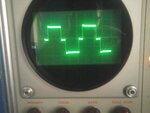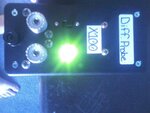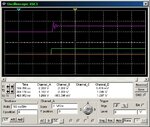GeorgesWelding
Member level 3
I've been in need of a differential o-scope probe and due to their price, the cheapest I found was $350ish, I decided to build one as a learning exercise. Now I know that the bandwidth and the CMRR of this home-built diff probe is not up to par with a professionally manufactured one, but it does work for what I'm using it for. The amplifier box currently accepts 2 10X scope probes and in combination with the internal circuitry of the diff-amp the attenuation is 100x. I know this isn't ideal and I have 2 100x probes ordered and I will swap out the input resistors and caps on my diff amp to give a much higher input impedance and it will be proper 100x attenuation. The amp box also has a grounding post that is tied to the scope's ground so that I am able to take measurements from completely floating circuits(something battery powered) by connecting the grounds together, then the 2 probes can each be connected to points other than ground. If the device-under-test is already earth-referenced(ie: connected to the mains), then the grounding post on the diff-amp is left unconnected and each of the two probes may still be connected to points away from ground/earth. Attached is the schematic, the board I designed for the amp, and a picture of the output on my scope. The device creating the input is a TL494 PWM PSU controller powered from a 16VDC isolated supply. The ground post of my diff amp is tied to the 0V/GND rail of the isolated supply giving it an earth reference and then the two probes are each connected to an output of the TL494. Previously I was only able to measure 1 output at a time and was unable to see the dead-time between the two outputs where as now you can clearly see on the scope's screen that I am able to easily see the dead-time between the outputs.
The amp is powered by 2 9V batteries giving a +9V/-9V supply voltage to the opamp.
View attachment Differential Sch.pdf
View attachment Differential Board.pdf


The amp is powered by 2 9V batteries giving a +9V/-9V supply voltage to the opamp.
View attachment Differential Sch.pdf
View attachment Differential Board.pdf


